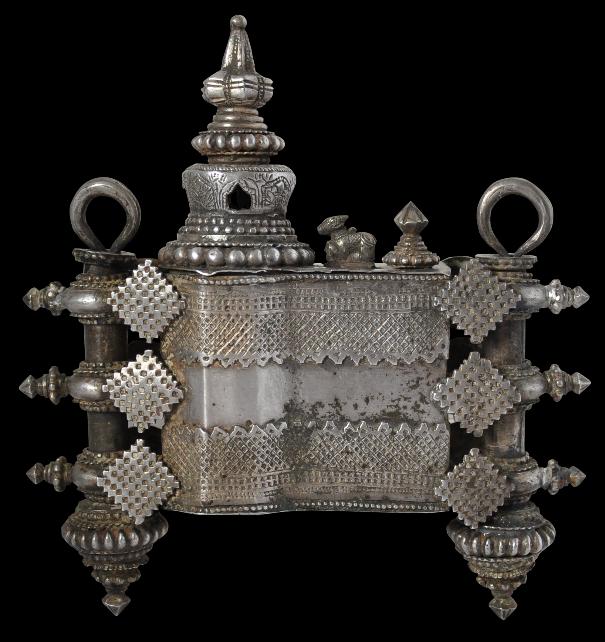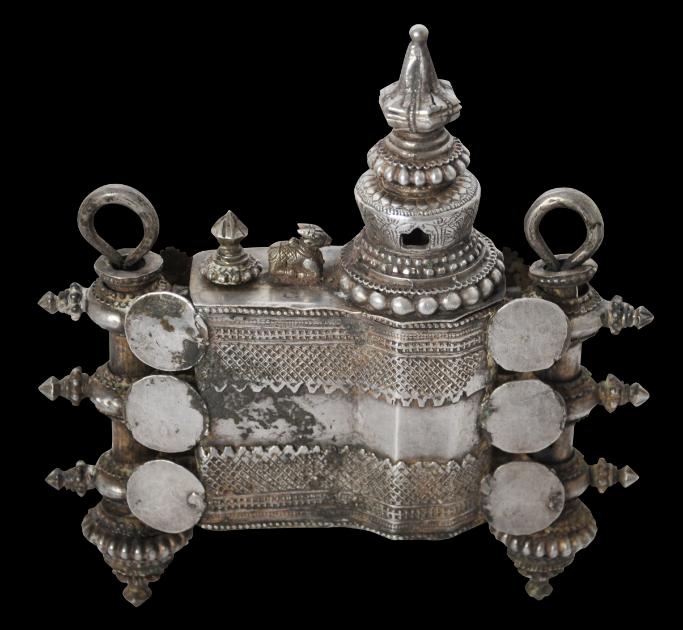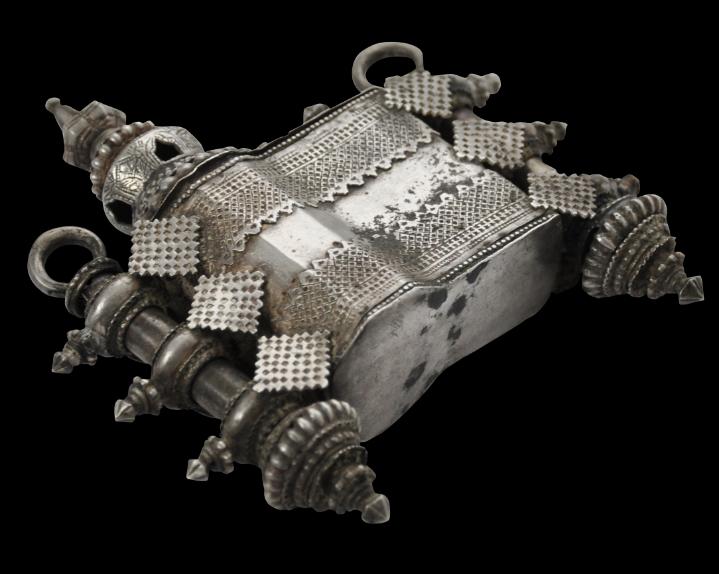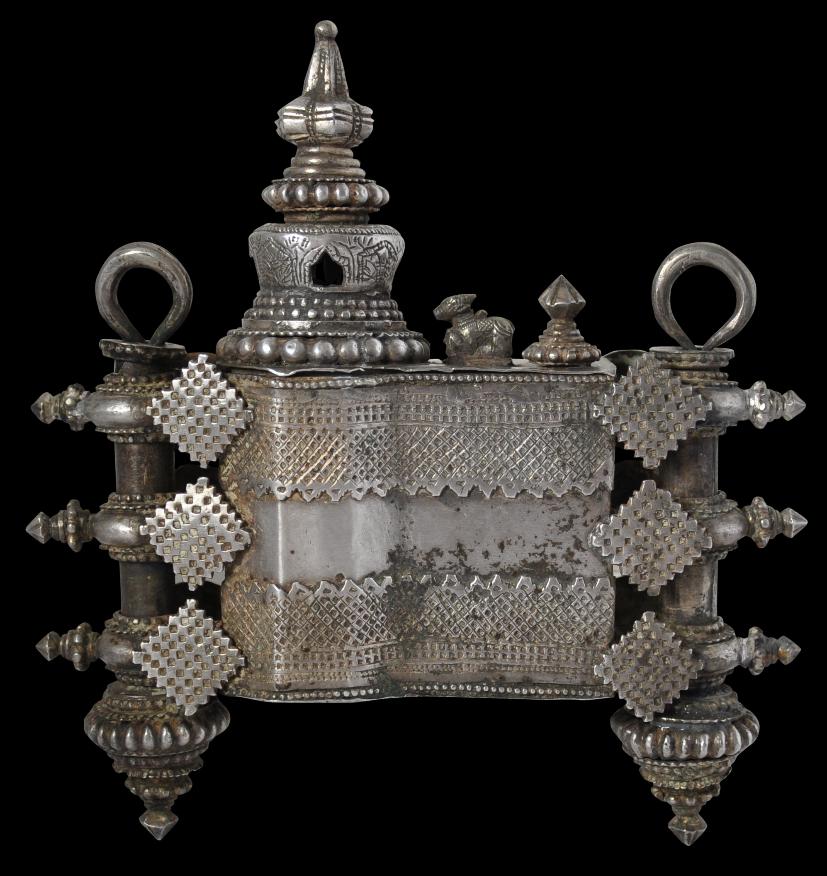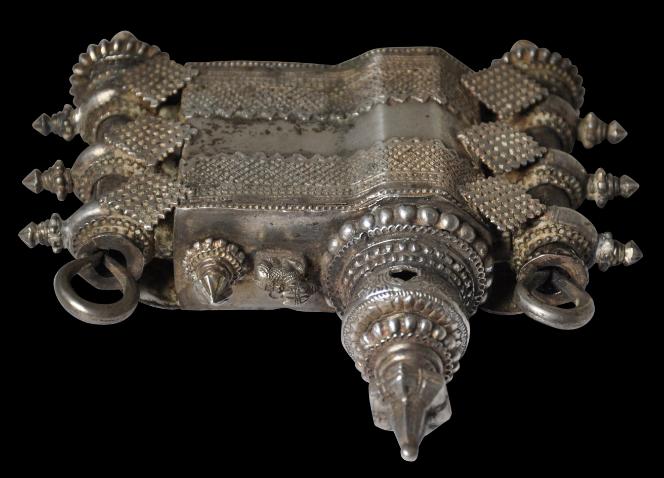
Silver Ayigula Pendant in Stupa Form, Andhra Pradesh, India, circa 17th century
Rare Silver Ayigula Pendant in Stupa Form
Andhra Pradesh, India
circa 17th century
height: 14cm, width: 13cm, weight: 251g
This elaborate stupa-form lingam casket (ayigula) is a superb and rare example of this type of lingam box. It is made of silver, chased and incised, and pierced applied silver plaques.
It is topped with a tall stupa structure with an attendant
Nandi, all in silver. Elsewhere there are multiple applied and perforated lozenges, perforated applied bands, architectural finials, and lotus bud finials.
Prominent silver loops on each side would have been threaded with a chain to allow the box to be worn from the neck.
The box has obvious significant age – it has been worn and used for the purpose for which it was make. Consequently, it has an excellent patina and with contours softened by wear and use. The form of this example also points to an earlier dating.
It would have been worn by a wealthier lay member of the Lingayat sect. (Poorer adherents wore wooden lingam boxes.) It has been fashioned in two parts that are held together when the box is suspended from the necklace.
This box once carried a
jangama lingam. Such lingams comprise a small piece of stone carved by specialist carvers that is then covered in a dark, protective compound called kauthi. This comprises a mix of lac, clay, sacred cow dung ashes, and marking-nut tree fruit juice or black antimony powder (also used as an eyeliner cosmetic.)
The Lingayat sect became prominent in the twelfth century as a reaction to Brahmanism. Many Lingayats today live in Karnataka, Maharashtra and Tamil Nadhu. The sect rejects the supremacy of the Brahmans; denies polytheism and acknowledges Shiva as the one true god thus rejecting Brahma and Vishnu. It rejects caste distinctions, rebirth, pilgrimages, temple worship and sacrifice; does not burn its dead but buries them; does not allow child marriage, and does allow widows to remarry.
The Lingayats believe movable lingams to be the only true symbol of Shiva. Individuals are initiated into the sect as they enter adulthood. A consecrated lingam uniquely created for each initiate is presented by a community guru amid prayers and ritual. The lingam is created only for the individual and must be protected and guarded, hence the need for a protective box as shown here. All Lingayats carry their personal lingam with them at all times. After death they are buried in a sitting position with the lingam in the left hand.
Overall, this lingam box is a superb and rare item for its age and quality. It is particularly unusual because of the stupa or temple-like structure on the top. A similar example is illustrated in Utracht (1997, p. 136) but that example is damaged and does not have a
Nandi. The example here is the best example of this type that we have seen and is the most complete.
References
Barnard, N., Indian Jewellery, V&A Publishing, 2008.
Utracht, O.,
Traditional Jewelry of India, Thames & Hudson, 1997.
Provenance
private UK collection.
Inventory no.: 4178
SOLD

